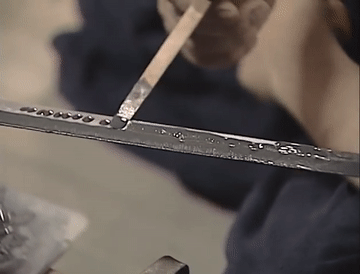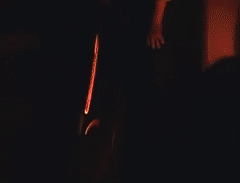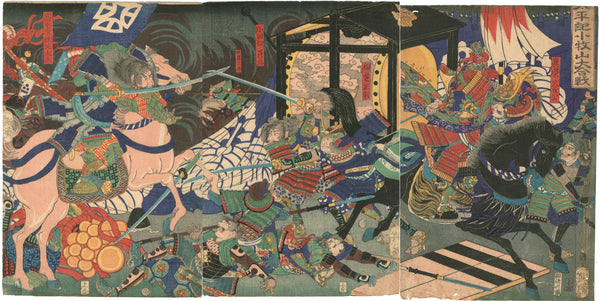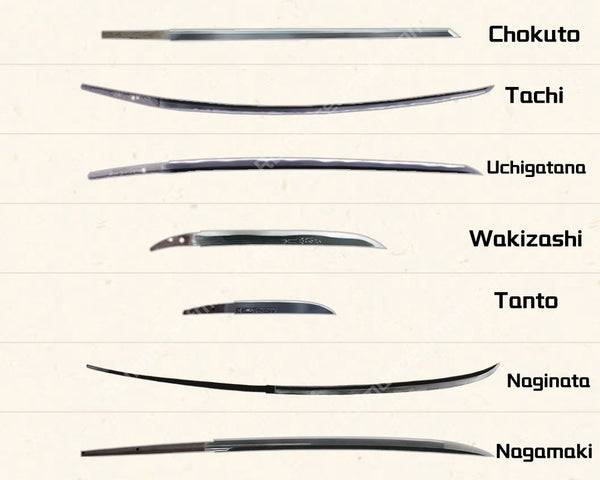Why is the Katana Sword Curved?
Have you ever wondered why the katana, Japan's legendary sword, has this unique curved shape? As the most representative weapon of the samurai, this beautiful and powerful sword has fascinated people around the world for centuries. But what's the story behind this famous curve, and how does it make the katana so special? In this article we will break it down by 2 parts:
What makes the katana sword curved, and why should it be curved.
Table of Content
- Part 1: What makes the katana sword curved.
- Part 2: Why Should a Katana be curved
- How Katana’s curvature changed over time
Part 1: What makes the katana sword curved.
The curve of a katana sword is formed during the clay tempering process, a special quenching technique that results in a hard, sharp edge and a flexible spine. The katana blade is still straight after forging, and it became curved due to the rapid temperature changing during quenching. All katana made in traditional way gets the curve like this, not by hammered shape to curve, not by cut a curved blade out of steel plate.
Clay tempering process explained:
During the clay tempering process, the swordsmith applies a thin layer of clay along the edge of the blade and a thicker layer on the spine. The blade is then heated and quenched in water. The thicker layer of clay on the spine slows down the cooling process, while the edge cools rapidly. This results in the edge becoming harder due to the formation of martensite, a very hard crystalline structure. Meanwhile, the spine remains relatively softer and more flexible due to the formation of pearlite and ferrite.

Due to the temperature difference, the cooling speed during quenching varies, with the edge cooling faster and the spine cooling slower. The thermal expansion and contraction cause the initially straight sword to bend forward first and then backward, forming the iconic curvature of the Japanese sword.

Here is a good video to demonstrate the process:
The curvature of a katana sword is called “Sori (反)”, there are no "standard size " for the sori, the sword can be customized depends on the swordsmith or the wielder's desire. generally speaking, Tachi is more curved, Uchigatana is more straight. The changing in the sori (curve) of samurai swords reflects the evolution of warfare in Japan. Which leads to our part 2.
Part 2: Why Should a Katana be curved
Brief Katana History
First of all, we should know that katana sword isn’t always curved thought out the Japanese history.
The documented history of swordsmithing in Japan dates back to the Kofun period, mainly iron swords. Then in in Asuka and Nara period, Japan was heavily influenced by China, especially the Tang Dynasty. So Japanese swords in that time are mostly singled edge, straight sword. There are still many ancient straight sword stored in national museum, for example the famous Heishi Shōrin ken (丙子椒林), The name is Ken (sword) but it’s actually a Chinese Tang Dao. It’s widely believed this is imported from China.
*This is the Heishi Shōrin Ken, now is national treasure of Japan

The real katana that we are familiar with today, is a creation in later Heian Period. Legend has it that a blacksmith called Amakuni invented the the very first curved Japanese sword: Tachi. He improved the forging method, and changed the design from straight to curve so the sword will be better at cutting, and less likely to break in battle. Katana was continue to evolve and become the world famous swords today.
Advantage of Katana's curve
Improved cutting ability: The curved blade of a katana allows it to make more effective slicing cuts. When a curved sword is drawn through a target, the curvature increases the length of the cutting edge that makes contact with the target, resulting in a more efficient cut.
Easier to draw: The curve of the katana makes it easier to draw from its scabbard (saya) quickly and smoothly. This is particularly important in situations where a swift reaction is needed, such as in close combat or when defending against surprise attacks.
Enhanced balance and control: The curvature of the katana shifts the weight distribution of the sword, which provides better balance and control for the wielder. This improved balance allows the wielder to perform quicker and more precise strikes.
How Katana’s curvature changed over time:
In Heian Period, Samurai were the military nobility, they developed their skills in archery, swordsmanship, and horsemanship. Mounted warfare became the dominant style of combat in this era. While the mainstream choice of weapons are Yumi (bow), even samurai armor (Yoroi) design must take flexible shooting arrows movements into consideration. But there will still be close combat, no arrow, no spear, only your swords. That’s when Tachi is come in handy.
Tachi (太刀) was designed for mounted combat. The curvature of the Tachi allowed for easier drawing and slashing while on horseback. A sword with curvature (Sori) is always easier to draw compare to straight sword, especially if you are on a horse. Not just Japanese Tachi, the famous shamshir sword is also curved and widely used by Persian cavalry.

The design of the Tachi was optimized for cutting down opponents in swift, sweeping motions. That’s why Tachi is usually longer, more curved. Because if it’s too short you can’t even touch the enemy, if it’s too long it’s difficult to use it single handed, and not easy to draw.
In Heian Period, Straight sword (Chokutō) become more of a decorative weapon, a symbol of status, and lack practical use in battlefield. Tachi is the go to sword at this time.
After Heian Period, warfare in Japan began to shift, with a greater focus on infantry and foot soldiers. The Ashigaru, who were foot soldiers or light infantry, started to play a more significant role in battles. the Uchigatana (打刀 literally means strike katana, is what we known as katana today) became increasingly popular and widely used. The Uchigatana's shorter and less curved design, compared to the Tachi, made it more suitable for close-quarters combat and infantry engagements. Samurai and other warriors appreciated the Uchigatana for its efficient cutting ability, ease of drawing, and versatility in combat situations.
In the more peaceful Edo Period, samurai will wear 2 katanas, one is Uchigatana and one is wakizashi, or tanto. You will noticed the shorter the katana, the less curved, especially Tanto, is almost straight. Because in this period, swords are more likely to use to stab instead of slashing, like the ninjato.
Summary:
The curvature of a katana has a lot more functional value than the aesthetic value we thought. it's a great reflection of the Japanese's intelligence because in this simply design sword, it combines practical and aesthetic all together.
*Image source:
touken-world.jp
Yoshitoshi's Triptychs






















